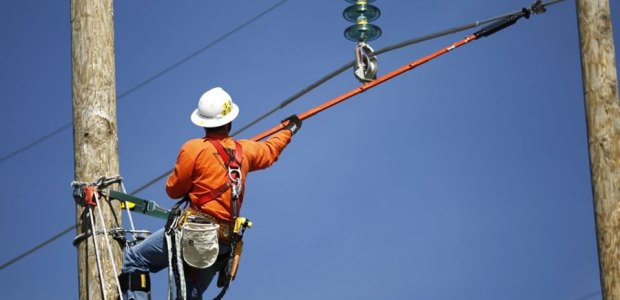
OSHA Issues Sweeping Power Generation, Transmission, Distribution Final Rule
The rule includes significant PPE changes, such as mandating fall harnesses for workers in aerial lifts and requiring that employers provide and pay for FR apparel.
OSHA is about to publish a major final rule addressing protection for workers performing electric power generation, transmission, and distribution work. It will be published April 11 and effective 90 days later, but some compliance dates are more than a year away: Jan. 1, 2015, for the requirement that employers make reasonable estimates of incident energy; and April 1, 2015, for the requirement that employers ensure the outer layer of clothing worn by an employee is flame-resistant when the estimated incident heat energy exceeds 2.0 cal/cm2 and ensure that each employee exposed to hazards from electric arcs wears the necessary arc-rated protection.
OSHA clarifies in the final rule that employers must both provide and pay for FR apparel.
"This long-overdue update will save nearly 20 lives and prevent 118 serious injuries annually," said Dr. David Michaels, assistant secretary of labor for occupational safety and health. "Electric utilities, electrical contractors, and labor organizations have persistently championed these much-needed measures to better protect the men and women who work on or near electrical power lines."
OSHA is revising the 40-year-old construction standard for electric power line work to make it more consistent with the corresponding general industry standard and also updating the construction and general industry requirements -– such as that host and contract employers must share safety-related information with each other and with employees, fall harnesses rather than body belts must be worn by workers in aerial lifts. There are revised approach-distance requirements to prevent unprotected workers from getting too close to energized lines and equipment, along with new requirements to protect workers from electric arcs.
The revised standards for electrical protective equipment apply to all construction work and replaces the existing construction standard, which was based on out-of-date consensus standards with a set of performance-oriented requirements consistent with the latest revisions of the relevant consensus standards, OSHA states in the rule.
Additional information on final rule is available at http://www.osha.gov/dsg/power_generation/.
It references accidents in the rulemaking record and in TVA's experience that "clearly indicate a need to protect all parts of the employee's body. Employees with uncovered skin are at risk of severe injury or death. Requiring protection only for areas covered by clothing would lead to the absurd possibility that an employer would be in compliance if an employee worked without clothing. Therefore, OSHA concludes that the standard should address not only the rating of the clothing, but the extent of protection needed for the employee's body. Accordingly, paragraph (g)(5) in the final rule requires that, when employers must provide arc-rated protection to employees, the protection must cover the employee's entire body, with a few exceptions described later."
The final rule requires face and head protection be provided for workers in certain circumstances, typically when the workers perform energized work on equipment in enclosures and when work involves exposures to three-phase arcs.
Employers with employees who are in protection with arc ratings between 8 and 25 cal/cm2 will need to start planning for, and implementing, heat-stress mitigation strategies beyond the strategies used for employees wearing normal work clothing, it states.
It states that OSHA believes employee safety "will significantly benefit from a requirement that employers provide FR and arc-rated clothing at no cost to employees. Employers generally need to ensure that the clothing worn by employees has an arc rating at least as high as the employer's incident-energy estimates. Selecting the proper clothing sometimes will involve determining the rating of an entire clothing system; such a determination is likely beyond the capability of individual employees, but is within an employer's capability."
OSHA estimates the total annualized cost of compliance for providing flame-resistant clothing is approximately $15.6 million and the total annualized cost of compliance for providing switching coats or flash suits is approximately $400,000.